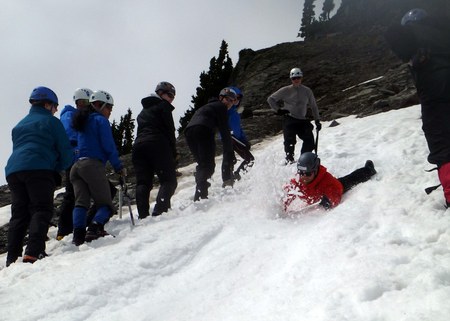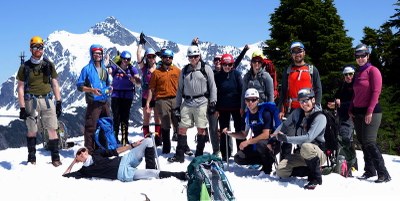
The art of teaching and instruction is a skill honed over a lifetime, and we all have a lot to learn ... about learning . Here are a few resources to start you off:
Instructional Strategies
- The vast majority of Mountaineers students are adult learners. Here are some basic principles to guide the way you teach your adult peers.
- There are many ways to assess whether your students have learned what you are trying to teach. For the lecture components of your courses, consider some assessment strategies that may improve student retention.
- How do you teach a group with wide ranging skills and knowledge? This comes into play a lot at The Mountaineers - think about keeping the group together by matching the pace of the slowest student. In the field of education, this is called "differentiation". Here are 6 different approaches to support your teaching.
Instructing is one of the best ways to improve how much you know about an activity yourself, but knowing how to do it well also creates better Mountaineers for the future! As we continue to coordinate our ever-expanding volunteer base, we strive to become industry leaders in outdoor education.
Basic Instruction Strategies at The Mountaineers
*The following comes from our Tacoma Branch's Basic Climbing Instructor's Manual.
Many of our students are here to see if they would like mountaineering. The Basic Course, for example, can go a long way toward making that happen. While we must maintain the high standards that have been set in the past, at the same time we don’t want to forget that all of us, students and instructors alike, are in this to have fun. As an instructor, you are key to making the course enjoyable and rewarding and to bringing new climbers into the club. Some things you can do are:
- Get To Know the Students – Introduce yourself and take time to talk to them and acquaint them with Mountaineer activities. Share your experience and knowledge.
- Be Patient – Most of the students will have had little or no mountaineering experience. It’s easy to make false assumptions about their knowledge and ability. Also, because someone takes longer to learn a skill doesn’t mean that he or she will be any less able to apply it in the long run.
- Be Supportive and Instill Confidence – Inform the students that safety is a prime consideration and that field trip activities are conducted under tightly controlled conditions.
- Maintain High Standards – If you condone substandard performance, you debase the entire course.
- Challenge the Students – Push the students to their limit; make them proud of their accomplishments.
- HAVE FUN – If you’re having fun as the instructor, so are the students.
Check out these happy scrambling students from our 2015 Intense Scrambling Course.

Teaching Standards
- Responsibility – Remember that the things you teach will be the foundation on which all of a student’s future climbing is supported. How well you do your job will be a major factor in determining how good and safe a climber he or she will be and how well you are belayed on the climbs you lead.
- Be an Example – As an instructor, you are a representative of The Mountaineers. All instructors should set the example by meeting or exceeding the standards expected of the students.
- Preparation – On some field trips you will be assigned a group of students and stay with them all day. On others, you will be assigned a topic(s) to teach and may be rotated to other stations during the day. Therefore, you must be prepared to teach any and all of the material to be covered on that field trip. Please take time before the trip to review pertinent material in [your committee's] manual and in Freedom 8. Remember, things may have changed since you took the Basic Course.
- Instructional Material – The Basic Course teaches a STANDARD set of skills that can be safely used by all climbers under a wide range of conditions. Please do not teach shortcuts and tricks-of-the-trade to Basic students - teach only the approved methods. While you have the experience and judgment to know when one can safely deviate from standard procedures, few (if any) of the students possess this knowledge. In addition, teaching standardized methods makes it easier for the students to learn and reduces confusion.
- Safety – Most, if not all, of the students are new to climbing and may be unaware of the consequences of their actions. Be alert for unsafe acts on their part and use every opportunity to stress safety. Continuously check the students and stress that they must check and double-check both themselves and their fellow climbers.
FIND INSTRUCTOR OPPORTUNITIES!
 Chris Williams
Chris Williams